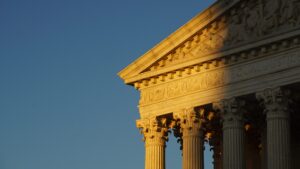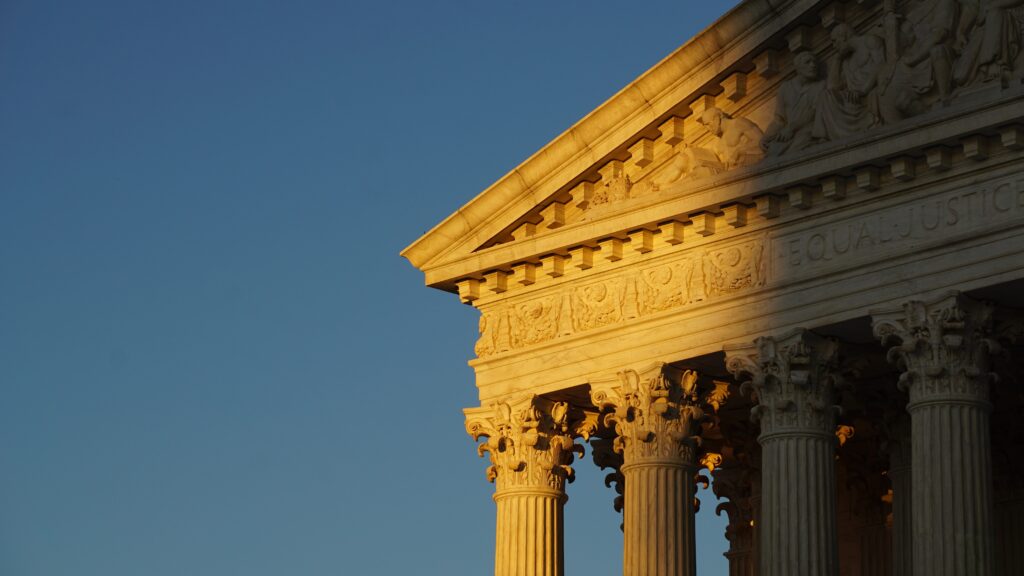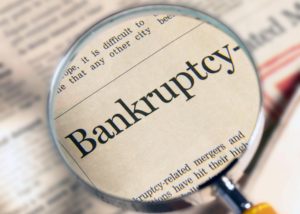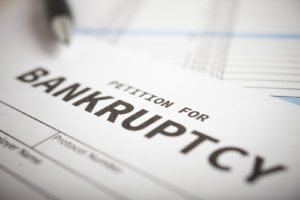10 Wake Forest L. Rev. Online 55
Sara Kathryn Mayson*
I. Introduction
It is no secret that
many American farmers are in financial trouble, specifically small family
farmers. As a part of an effort to
alleviate farmers in a struggling agriculture economy, Congress passed the
Family Farmer Relief Act of 2019, an amendment to Chapter 12 of the Bankruptcy
Code that expands specialized bankruptcy relief to more farmers.[1] The
bill was signed into law on August 23, 2019, and it became effective
immediately. Chapter 12 of the
Bankruptcy Code allows small family farms to continue their farming operations
while creating a debt repayment plan that successfully reorganizes their
business through a set of provisions “created specifically to provide repayment
flexibility and reorganizational advantages for family farms during poor
economic times.”[2]
This amendment
increases the debt limit of Chapter 12 from $4.4 million to $10 million.[3] The
change now incorporates farmers who were originally meant to be protected, as
the farming industry has changed since Chapter 12 was originally enacted in
1986 and amended in 2005. While the
Family Farmer Relief Act of 2019 adjusts the definition of a family farmer to
promote the underlying policy behind Chapter 12, the amendment also engages in
something deeper. The amendment directly
aims to help small family farmers remain in business by restructuring their
debts, but it also indirectly targets the development and maintenance of the
rural communities where these farms are located.
This Article will
discuss the history and purpose of Chapter 12, the continued need for Chapter
12 in the Bankruptcy Code, and the need for the 2019 amendment. The Article will also touch on the broader
implications of Chapter 12 and the importance of preserving small family farms
for rural communities and society as a whole.
Chapter 12 is important beyond outside simply the bankruptcy context,
because (i) reorganizing and facilitating the continued operation of small
family farms strengthens the economy of the communities where they are located
and provides food security, (ii) the benefits of megafarms are limited, if not
outweighed, by the negative impacts they have on their surrounding communities,
and (iii) a healthy rural economy creates a healthier urban economy. The Family Farmer Relief Act of 2019 is an
important amendment that realizes Chapter 12’s design by assisting small family
farms to reorganize during economic hardship and continues to support the
benefits of small family farms.
II. History
In the 1980s,
thousands of family farms were foreclosed because of an agricultural economic
crisis that rivaled conditions during the 1930s.[4] One
contributing factor to the crisis was an agricultural boom in the 1970s which
encouraged farmers and investors to expand operations and leverage their
farming assets,[5] a credit option made easier under new
federal law which allowed farmers to take out higher risk loans.[6] However,
the strong agriculture market of the 1970s began to crumble in the early 1980s,
leaving farmers with large loans and high interest rates that they could not
afford and assets that were no longer valuable enough to secure those
loans. These dire circumstances came to
a head as a result of various issues
such as: economic forces outside agriculture that caused interest rates to
dramatically increase; a grain embargo in 1980 that lowered commodity prices
while production costs were increasing;[7] and the plummet in value of the farmland
that secured most farm debt by the late 1980s.[8] The
massive dissolution of family farms indicated that the existing reorganization
provisions under the Bankruptcy Code were ineffective to provide the needed
debt relief to family farmers. In
response, Congress enacted the Family Farmers Bankruptcy Act of 1986 which
created a new proceeding under the Bankruptcy Code titled Chapter 12, designed
specifically for family farmers to help avoid farm foreclosures in favor of
reorganizations and continued operation.[9]
Chapter 12 of the Bankruptcy Code was enacted to “give family farmers
facing bankruptcy a fighting chance to reorganize their debts and keep their
land.”[10]
III. Chapter 12
Chapter 12 is a
specific type of bankruptcy available to family farmers, a defined term under
the Bankruptcy Code determined by a debtor’s farm income, farm debt, and engagement
in farming.[11] Upon
filing for bankruptcy under Chapter 12, a family farmer receives judicial
protections, such as an automatic stay, which prevent creditors from certain
debt collections and foreclosing on property.[12]
Throughout bankruptcy, the Chapter 12 debtor will continue to operate
the farm and a trustee is appointed to monitor and oversee the case.[13]
Within 90 days of filing, the debtor must submit a
reorganization plan to the bankruptcy court, proposing a repayment plan which
is typically over a three- to five-year period.[14] The plan is meant to restructure a farmer’s
debt through debt modification. This is
accomplished by mechanisms uniquely available to family farmers under Chapter
12, such as reducing a secured debt to the value of the collateral, lowering
the interest rate on a debt, and extending a loan’s repayment term.[15] A secured debt may be bifurcated if the debt
exceeds the value of the collateral, in which case the debt amount above the
value of the collateral is reclassified as unsecured debt.[16] A Chapter 12 plan must provide for full
payment of priority claims,[17]
and a debtor is required to pay all secured debts in full, in addition to
market rate interest if the payment occurs over time.[18]
This secured debt
repayment may be extended beyond the life of the plan, providing extra
flexibility in light of the sporadic income stream of farm products.[19] Chapter
12 debtors may, however, only be required to pay a small portion of their
unsecured debt.[20]
Unsecured creditors, or unsecured portions of a secured claim, are only
entitled to receive at least as much as they would receive in a liquidation
under Chapter 7 and, in most cases, the debtor’s projected net disposable
income.[21] Upon
successful completion of the plan, the farmer receives a discharge and any debt
left unpaid to unsecured creditors is forgiven.[22]
Prior to the
enactment of Chapter 12, family farmers could only reorganize under Chapter 11
or Chapter 13 of the Bankruptcy Code.[23]
Chapter 11, however, is typically used for restructuring large
businesses. Under Chapter 11, the debtor
must propose a plan that is supported by at least a majority of the debtor’s
creditors.[24] The
unequal bargaining power between farmers and creditors made this plan
requirement unrealistic for most farmers.[25]
Additionally, the absolute priority rule requires a debtor to pay
unsecured creditors in full if they object to the plan in order to maintain any
ownership interest in their property. [26]
Chapter 12, however, does not require creditor support and a plan may be
approved over creditor objections, compelling debt adjustments while enabling a
farmer to keep its property. [27] The
absolute priority rule is also replaced in Chapter 12 by the liquidation and
disposable income tests to allow reorganization for the family farmer along
with some security for creditors. [28]
Chapter 13 is
designed for individuals with regular income seeking to reorganize their
debts. This chapter of the Bankruptcy
Code is unavailable to corporate or partnership farmers, or any individual
whose debt exceeds a prescribed amount.[29] While
the plan does not require creditor acquiescence, the debt ceiling for Chapter
13 prevents many family farmers from qualifying.[30]
Additionally, Chapter 13 restricts reorganization of real estate debt to
residential property, which often precludes a farmer’s ability to restructure a
typical family farm mortgage.[31]
Chapter 13 also requires regular payments to creditors and complete
payment to secured creditors before receiving a discharge. The unpredictable nature of farm income
hinders regular payments and the ability to pay off large secured debts within
three to five years, meaning that any Chapter 13 case filed by a family farmer
would inevitably be dismissed for noncompliance.
These reorganization
impediments under Chapter 11 and 13 would force family farmers into
liquidation, while Chapter 12 successfully deals “with the special problems
created by farm bankruptcies which each of the other options failed to
resolve.”[32]
IV. Impact of Chapter
12 and Adjustments
Proponents of Chapter 12 believe its enactment has brought
great benefits to small family farmers.[33] Some scholars, though, question the need for
Chapter 12.[34] They argue (i) that Chapter 12 has not had a
significant impact because it has rarely been utilized and (ii) that the low
filing numbers of Chapter 12 bankruptcies as compared to other chapters
indicate Chapter 12’s futility in providing reorganization relief to small
family farmers.[35] These Chapter 12 filing statistics, though,
are misleading. The existence of this
chapter in the Bankruptcy Code provides a uniform system of debt restructuring
that facilitates negotiations outside of court.
Chapter 12 has had a shadow effect, providing farmers with a bargaining
chip to get creditors to negotiate outside of court.[36]
Because Chapter 12
gives farmers more leverage to demand concessions from secured creditors than
under any other reorganizational chapter,[37] creditors are encouraged to engage in
out-of-court negotiations. One study
finding support for the out-of-court influence was in Iowa where attorneys
reported that one-third to one-half of their clients’ farm credit disputes were
negotiated after the enactment of Chapter 12.[38]
Additionally, the number of filings will naturally be higher when the
population that qualifies for relief under those provisions is larger.[39]
Despite the limited number of filings, the success rate of Chapter 12 is
greater than cases filed under other reorganization chapters. Over the last ten years, Chapter 12 has
enjoyed a success rate of around forty percent, while Chapter 11 has had
between a ten to thirty percent reorganization success rate and Chapter 13 only
has about a thirty-seven percent success rate.[40]
Lawmakers recognize
the value of Chapter 12, even though it only reaches a small percentage of the
population. In 2005,[41] Congress made Chapter 12 a permanent
provision of the Bankruptcy Code as a part of the Bankruptcy Abuse Prevention
and Consumer Protection Act (BAPCPA).[42] Not
only did BAPCPA make Chapter 12 a permanent provision of the Bankruptcy Code,
it also modified the definition of family farmer to align with the realities of
the farming industry. The definition was
expanded to include part-time farmers who earn at least half of their income
from farm work instead of the previous eighty percent income requirement.[43] Also,
the look back period to determine whether a debtor meets the definition of
family farmer was extended to cover the previous three years instead of the
last year, providing greater flexibility for farmers who might have sought
non-farm work temporarily to address financial problems with their farming
operation.[44]
Additionally, the debt limit was raised.[45] The
revised definition of family farmers and increase in debt limits was a response
to the change in how small family farmers operate and earn their income. These changes were made to provide relief to
the types of farmers that Congress intended to help when Chapter 12 was
originally enacted.
V. Why Is the Debt
Limit Increase Necessary?
Although the Family
Farmer Act of 2019 changed only one aspect of Chapter 12, it was critical. The debt limit is a bright line rule that
determines whether Chapter 12 relief is available to a farmer. Debt limits in Chapter 12 are extremely
important because of the debt-centric nature of farming. Farmers are required to obtain credit and
take on debt in order to operate, and a lot of debt at that.[46]
National farm debt has reached over 416 billion dollars and has
increased 182 percent since 1986.[47] The
2019 amendment allows the purpose of Chapter 12 to be fulfilled since farming
has changed significantly over the last few decades. Additionally, the current economic conditions
that farmers face further punctuate the need to provide access to specialized
restructuring relief. [48]
The original debt limit restrictions in Chapter 12 were set
to limit relief to small family farmers only,[49]
in part because large agricultural businesses could successfully reorganize
under Chapter 11 without the same impediments that a small farm would face.[50] Land prices generally indicate an appropriate
debt limit for debtors.[51] The original $1,500,000 cap was “set in 1986
when farm land values were low,”[52]
and the amended debt limit in 2005 was to account for inflation.[53] By 2017, farmland prices had almost tripled
since 2005.[54]
With increased land
values, family farmers were able to leverage that land for larger loans.[55] The
larger loans were needed as production costs increased.[56]
Additionally, farm equipment has changed and become more complicated,
bearing a higher price.[57] The
increased debt limit reflects the increased cost of production as well as the
increased value of land.
Although farmland has
increased in value, other economic conditions have created an agricultural
downturn in addition to more expensive production costs. Mimicking the pattern from the 1970s and
1980s, there was an agricultural boom at the beginning of the 21st century that
began to decline in 2013.[58] Since
then, net farm income has declined for the past five years[59] and is almost half of what it was in 2013,[60] as commodity prices decrease as a result of
globalization.[61]
Natural disasters resulting from climate change have devastated farms,[62] and the trade war with China has displaced a
large market of consumers.[63] The
result of the accumulation of these pressures resembles the conditions of the
1980s farm crisis.[64]
These pressures have
manifested themselves in a variety of ways. Some small farmers are retiring or
selling their farms, while others have filed for bankruptcy.[65] More
than 100,000 farms closed between 2011 and 2018,[66] and Chapter 12 farm bankruptcy filings have
increased every year for the past five years with a twenty percent increase in
2019 alone, ending at an eight-year high.[67]
How many more farmers
will qualify for Chapter 12 protection going forward is unclear. One agricultural policy analyst has found
that only around 5,000 farms would become newly eligible for Chapter 12 relief
out of the 2.1 million existing farms.[68] If
this is true, the 2019 amendment might not yield as much assistance as
lawmakers in Washington had hoped. This
study, however, based its findings on data from 1992 to 2011. In 2011, the national farm debt was 139 billion
dollars,[69] while today that debt has almost tripled to
416 billion dollars. Only time will tell
how effective the increased debt limit will be in preserving small family
farms.
Raising the debt
limit gives more farmers the opportunity to benefit from favorable and flexible
restructuring under Chapter 12 that is needed in today’s depressed farm
economy.[70]
Following the 2019 amendment, Chapter 12 is now more aligned with family
farm scale and credit needs.[71] The
amendment was intended to prevent “mass liquidations and further consolidation
in the largest sectors of the industry” and will enable more small family
farmers to retain their assets and continue their operations.[72]
VI. Broader
Implications: Why Does Chapter 12 Matter?
The Family Farmer
Relief Act of 2019 is a bill that was aimed at preserving small family farmers
in America, an important societal goal.
The Supreme Court has noted that “[f]amily farmers hold a special place
in our Nation’s history and folklore,”[73] but some legal scholars argue that family
farmer protections are simply pursued for sentimental reasons.[74] Small
family farms, though, provide tangible benefits for our country, besides
nostalgia, that support a grant of specialized legal relief.
One of the largest
critiques of providing additional agricultural relief is that policymakers rely
on agricultural relief as the pipeline for rural development.[75] While
this critique may have some validity, it does not follow that support for small
family farms is inconsequential.
Although farms and agriculture may no longer be the backbone for rural
America, small family farms still play an important role in our society. Small family farms, the kind Chapter 12 aims
to benefit, contribute to the security of our food supply chain, biodiversity,
and the vitality of rural economies.
If small family farms
disappeared, large megafarms would be vulnerable to food supply failure. This is because large farms typically
specialize in only a few products and monocultures.[76] In
the event of a disease or a natural disaster that destroys the product or
isolates a region from the rest of the country, that region loses its entire
access to that product.[77]
Additionally, small farms often produce specialized foods that bolster
biodiversity.[78]
Because megafarms focus on a limited number of products, small farms
offer diversification of our food supply.
And even if the small farmer grows the same crop as a large producer,
that farmer will often cultivate a different variety of that product.[79] Food
chain supply security, biodiversity, and food variety all support preservation
of small family farms.
Rural economies and
communities also benefit from small family farms, experiencing improved
qualities of life. While megafarms might
appear to create benefits for rural communities, such as jobs, more efficient
farming, and lower food costs, the community suffers when a small farm is taken
over. The vertical integration of
megafarms forecloses open and competitive markets at a local level.[80]
Additionally, the
perceived greater efficiency of megafarms is not realized.[81] The
local economy and consumers do not receive the monetary benefits of megafarm
production and investment, as supplies are obtained outside the community and
profits go to investors, often in urban areas.
[82] Just
as large corporate farms are less likely to put money into the local economy,
they are also less likely to care about the environmental impacts of their
operations. Because small family farms
are connected to their land and the community, they are more likely to “manage
their natural resources responsibly.”[83] Some
scholars have suggested that rural communities do not need small family farms
because those farms actually depend on the local rural economy to continue.[84] But
studies have consistently shown that rural communities with small family farms
have a higher standard of living than rural communities surrounded by
industrialized farms.[85]
Small family farm
success and the adjacent success of its rural economy is important because
rural prosperity affects the productivity and success of our entire
society. Rural and urban areas are
interdependent. Rural communities
provide many things, including food, energy, and unique experiences, while
urban communities provide a market, specialized services, and resources for
investment.[86]
Quality of life in rural and urban communities also in turn impact one
another.[87]
Taken together, small
family farms should continue to receive policy attention because of the tangible
benefits they provide to rural communities, as well as their urban
counterparts. Protecting small family
farms should not be labeled as the “silver bullet” solution to rural economic
problems though; family farms are only one important piece of rural community
success.[88]
VII. Conclusion
The Family Farmer
Relief Act of 2019’s debt limit increase for Chapter 12 qualification will help
family farmers maintain their operations and potentially encourage farmers away
from retiring and selling off their productions to large farm operations that
are starting to dominate agriculture.
The purpose of Chapter 12 is to provide reorganization relief to small
family farmers during economic difficulties and the changes in farming
operations necessitated this amendment.
Chapter 12’s preservation of small family farmers in turn provides food
supply security and benefits rural communities.
And while this is true, both agriculture and non-farm rural development
should be integrated because agriculture alone cannot revitalize rural
communities.[89]
Nevertheless, without policies supportive of family farms, rural and
urban communities would suffer as small family farms disappeared.
The unique
circumstances of small family farmers required a specialized provision to
accomplish the reorganization goals of the Bankruptcy Code. The need for individualized rules for
particular areas in our economy is further illustrated by the special treatment
for small businesses and the recent enactment of the Small Business Reorganization
Act.[90]
Chapter 12 continues to provide relief to small family farmers that is
unavailable under other reorganization provisions. Protecting individual producers is not just
about sentiment; it’s also about our nation’s prosperity as a whole.
* Law clerk for the Honorable Robert L. Jones, United States Bankruptcy Judge for the Northern District of Texas. Wake Forest University School of Law, J.D. 2019. University of North Carolina at Chapel Hill, B.A. 2016. Sara Kathryn is a former Articles Editor of the Wake Forest Law Review and would like to thank her family and friends for their support and feedback during the publishing process. In particular, she thanks her mother, Ann Matthews, for inspiring and sharing her love of bankruptcy law; Angus Jackson for his assistance throughout the writing process, and to Mike Garrigan for believing in this Article and encouraging her to publish it.
[1]. See Family Farmer Relief Act of 2019, Pub. L. No.
116-51, 133 Stat. 1075.
[2]. 165 Cong. Rec. H7439 (daily ed. July 25,
2019) (statement of Rep. Delgado).
[3]. Revision
of Certain Dollar Amounts in the Bankruptcy Code Prescribed under Section
104(a) of the Code, 84 Fed. Reg. 3488 (proposed Feb. 21, 2019) (noticing the
debt limit of $4,411,400, effective April 1, 2019).
[4]. David
Ray Papke, Rhetoric and Retrenchment: Agrarian Ideology and American
Bankruptcy Law, 54 Mo. L. Rev.
871, 881–82, 889–90 (1989).
[5]. U.S.
Dept. Agric.: Econ. Res. Serv., Are
Farmer Bankruptcies a Good Indicator of Rural Financial Stress? 3 (1996) (“The
economic climate of the 1970s encouraged farmers to expand production and
benefit from export opportunities and strong commodity prices. High rates of
inflation and low real interest rates further encouraged investment in
farmland. Per acre farmland values
increased more than threefold from $196 in 1970 to $823, its 1982 peak. Total farm-sector equity grew 255 percent
during 1970-80. Total farm business debt
nearly quadrupled from $48.8 billion in 1970 to $193.8 billion at its peak in
1984. A considerable number of farmers
were financially extended and vulnerable to sudden shifts in economic forces.”),
http://ageconsearch.umn.edu/record/33675/
files/ai967246.pdf.
[6]. Farm
Credit Act of 1971, Pub. L. No. 92-181, 85 Stat. 583 (codified as amended in
scattered sections of 31 U.S.C.) (increasing the loan-to-value ratio of
mortgage debt).
[7]. Nat’l Bankr. Rev. Comm’n, Bankruptcy: The
Next Twenty Years 1012 (1997), http://govinfo.library.unt.edu/nbrc/report/23chapte.pdf.
[8]. Susan
A. Schneider, Bankruptcy Reform and Family Farmers: Correcting the
Disposable Income Problem, 38 Tex.
Tech L. Rev. 309, 324–25 (2006).
[9]. Bankruptcy
Judges, United States Trustees, and Family Farmer Bankruptcy Act of 1986, Pub.
L. No. 99-554, 100 Stat. 3088, 3105–16 (1986).
[10]. H.R. Rep. No. 99-958, at 48 (1986), reprinted in 1986 U.S.C.C.A.N. 5246,
5249.
[11]. 11
U.S.C. § 101(18) (2018). The provision also
includes family fishermen as of 2005.
[12]. §
362.
[13]. §§
1203, 1204, 1207; see also § 1202(a) (protecting creditors’ interests).
[14]. §
1221.
[15]. P.
Maureen Bock-Dill, Note, Get Down and Dirty: The Eighth Circuit’s Admonition
to Farmers Seeking the Protection of Chapter 12, 43 Ark. L. Rev. 701, 701 (1990).
[16]. §§
506(a); 1225(a)(5)(B).
[17]. Priority
claims are defined in the Code, but include things like taxes owed to the IRS
and child support payments.
[18]. §
1225(a)(5).
[19]. §
1222(b)(9).
[20]. Susan
Schneider, Chapter 12 Bankruptcy: Family Farm Restructuring, 2015 Ark. L. Notes 1686 (2015) [hereinafter
Schneider, Family Farm Restructuring].
[21]. §§
1225(a)(4), (b).
[22]. §
1228.
[23]. Of
course, they may be able to still proceed under these chapters.
[24]. §
1126.
[25]. Mark
Bromley, The Effects of the Chapter 12 Legislation on Informal Resolution of
Farm Debt Problems, 37 Drake L. Rev.
197, 197 (1988); Jonathan K. Van Patten, Chapter 12 in the Courts, 38 S.D. L. Rev. 52, 97 (1993).
[26]. §
1129(b)(2)(B)(ii).
[27]. Schneider,
Family Farm Restructuring, supra note 20.
[28]. See In re Foster, 84 B.R. 707, 710 (Bankr.
D. Mont. 1988)
[29]. § 109(e)
(unsecured debt limit of $419,275 and secured debt limit $1,257,850).
[30]. In re Perkins, 581 B.R. 822, 833–34 (B.A.P. 6th
Cir. 2018).
[31]. Schneider,
Family Farm Restructuring, supra note 20.
[32]. Bock-Dill,
supra note 15, at 703.
[33]. Nat’l Bankr. Rev. Comm’n, supra note 7, at 1014 (citing To
Extend the Period During Which Chapter 12 of Title 11 of the United States Code
Remains in Effect: Hearing on H.R. 5322 Before the Subcommittee on Economic and
Commercial Law of the House Committee on the Judiciary, 102d Cong., 2d
Sess. 21 (1992) (“Chapter 12 has saved literally thousands of family farms,
stabilized farm values, and encouraged more out-of-court negotiations and
settlements between lenders and farmers.”) (testimony of A. Thomas Small, one
of the principal drafters of Chapter 12, before the House Judiciary
Committee)).
[34]. These
critiques were generally raised prior to 2005, when Chapter 12 became a
permanent provision in the Bankruptcy Code.
[35]. Katherine
M. Porter, Phantom Farmers: Chapter 12 of the Bankruptcy Code, 79 Am. Bankr. L.J. 729, 729–30 (2005).
[36]. Bromley,
supra note 25, at 197–98; Schneider, Family Farm Restructuring, supra
note 20; Van Patten, supra note 25, at 97.
[37]. Porter,
supra note 35, at 731.
[38]. Chris
Faiferlick & Neil E. Harl, The Chapter 12 Bankruptcy Experience in Iowa,
9 J. Agric. Tax’n & L. 302, 331
(1988).
[39]. Today
there are about 2 million farms, which includes farms that do not fit into the
definition of family farmer under the Code; compared to 32.5 million businesses
and over 327 million people in America today.
[40]. U.S. Tr. Program, U.S. Dep’t of Justice, Chapter
12 Standing Trustee FY18 Annual Reports (2019), https://www.justice.gov/ust/private-trustee-data-statistics/chapter-12-trustee-data-and-statistics (278 new cases were filed in 2018 and 97 were
completed with a plan); see Jamey M. Lowdermilk, A Fighting Chance?
Small Family Farmers and How Little We Know, 86 Tenn. L. Rev. 177, 192 n.100 (2018) (citing U.S. Trustee
Chapter 12 Standing Trustee Annual Reports for years 2009-2017 and finding that
“approximately forty percent of Chapter 12 cases complete a reorganization plan
measured by the number of Chapter 12 cases closed with a completed plan divided
by the number of new Chapter 12 cases filed between January 1, 2009, and
December 31, 2017 (the years for which data is available)
((122+137+154+119+99+88+97+118+125) / (259+259+194+221+270+347+428+421+264) =
0.40)”). When the data from 2018 is included,
the percentage goes down slightly, to a 39.3% success rate. See sources cited supra this note.
See also Cathy Moran, Chapter
11 Bankruptcy Explained, Bankr. in
Brief, https://www.bankruptcyinbrief.com/chapter-11-bankruptcy-explained/
(last visited Mar. 8, 2020) (“The rate of successful Chapter 11 reorganizations
is depressingly low, sometimes estimated at 10% or less.”); Elizabeth Warren
& Jay L. Westbrook, The Success of Chapter 11: A Challenge to the
Critics, 107 Mich. L. Rev.
603, 614 (2009) (“The data show that the success rate is at least twice what
conventional wisdom holds, approaching a third of the cases filed, even if a
simple, naïve metric is employed.”); Jonathan Petts, Why is Chapter 13
Probably a Bad Idea?, Upsolve,
https://upsolve.org/learn/why-chapter-13-is-probably-a-bad-idea/#1-chapter-13-has-a-failure-rate-of-67
(last updated Aug. 16, 2019) (“[O]nly 33% of Chapter 13 cases result in a
discharge . . . .”); Ed Flynn, Chapter 13 Case Outcomes by State,
33 Am. Bankr. Inst. J., Aug. 2014,
at 40, 76 (chapter 13 plan completion was about 36% between 2007 to 2013); Ed
Flynn, Success Rates in Chapter 13, 36 Am.
Bankr. Inst. J., Aug. 2017, at 38, 38 (showing a success rate of 38.8%
between 2010 and 2016).
[41]. Bankruptcy
Abuse Prevention and Consumer Protection Act of 2005, Pub. L. No. 109-8, 119
Stat. 23.
[42]. See Jerome
M. Stam & Bruce L. Dixon, U.S. Dept. Agric.: Econ. Res. Serv., Farmer
Bankruptcies and Farm Exits in the United States, 1899-2002, at 31–32
(2004), https://www.ers.usda.gov/webdocs/publications/42532/
17750_aib788_1_.pdf?v=; see also
Susan A. Schneider, History of Chapter 12 Bankruptcy: On Again, Off Again,
18 Agric. L. Update 1, 1–2 (2001)
(seven-year sunset provision that was renewed by Congress several times
maintaining its temporary nature), https://nationalaglawcenter.org/wp-content/uploads/assets/
aala/08-01.pdf.
[43]. Porter,
supra note 35, at 734.
[44]. See Pub. L. No. 109-8, § 1005 (codified as amended
at 11 U.S.C. § 101(18)(A)(ii) (2018)).
[45]. See What is Chapter 12 Family Farmer
Bankruptcy?, Am. Farm Bureau Fed’n (Apr.
11, 2019), https://www.fb.org/market-intel/what-is-chapter-12-family-farmer-bankruptcy.
[46]. Nat’l Bankr. Rev. Comm’n, supra note 7, at 1018 (“Even at the
family farm level, farming is a debt-intensive business. Farm debt does not
only include land and equipment financing, but the cyclical nature of farming
requires farmers to finance their working capital on a year-to-year basis.”).
[47]. Robert
J. Keach, ABI Testifies on Family Farmers and Small Business Reorganizations,
38 Am. Bankr. Inst. J., Aug. 2019,
at 8, 8.
[48]. P.J.
Huffstutter, U.S. Bill Raising Debt Ceiling for Farm Bankruptcies Heads to
White House, NASDAQ (Aug. 2, 2019, 6:18 PM), https://www.nasdaq.com/articles/u.s.-bill-raising-debt-ceiling-for-farm-bankruptcies-heads-to-white-house-2019-08-02 (“With what’s going on in farmland today – as
net income has continued to decrease, all the market uncertainty and the
natural disasters – this is a very timely change.”).
[49]. Nat’l Bankr. Rev. Comm’n, supra note 7, at 1017.
[50]. Id.
[51]. Alexandria C. Quinn, The Next Generation
of Chapter 12 Bankruptcy: Revising the Remedy, 22 Drake J. Agric. L. 245, 261–62 (2017).
[52]. Nat’l Bankr. Rev. Comm’n, supra note
7, at 1017.
[53]. Porter, supra note 35, at 734.
[54]. Quinn, supra note 51, at 262.
[55]. See Nat’l Bankr. Review Comm’n,
supra note 7, at 1017, discussing how
the $1.5 million set in 1986 had not changed at the time of the report in 1997.
[56]. Keach, supra note 47, at 8 (“Relative to
1986, and in nominal dollars, production expenses in agriculture have increased
by 198 percent and farm debt has increased by 182 percent, while net cash
income has experienced only half of that growth . . . .”).
[57]. Not Fake News: Congress Enacts New, Sensible
Bankruptcy Reform, 38 Am. Bankr. Inst. J., Oct. 2019, at 10,
76 (“It had gone from two-wheel drive tractors to monster machines pulling
wide, wide swaths of equipment with GPS precision. So today’s $10 million limit is basically
today’s equivalent of $1.5 million back in 1986.”).
[58]. Alana
Semuels, ‘They’re Trying to Wipe Us Off
the Map.’ Small American Farmers Are Nearing Extinction, Time (Nov. 27, 2019), https://time.com/5736789/small-american-farmers-debt-crisis-extinction/.
[59]. 165 Cong. Rec. H7439 (daily ed. July 25,
2019) (statement of Rep. Delgado).
[60]. Semuels,
supra note 58.
[61]. P.J.
Huffstutter & Jason Lange, Wall
Street Banks Bailing on Troubled U.S. Farm Sector, Reuters (July 11, 2019), https://www.reuters.com/article/us-usa-farmers-lending-insight/wall-street-banks-bailing-on-troubled-u-s-farm-sector-idUSKCN1U618F.
[62]. 165 Cong. Rec. H7438 (daily ed. July 25,
2019) (statement of Rep. Cicilline).
[63]. Humeyra
Pamuk & Julie Ingwersen, Farm Real
Estate Prices Holding Up, But USDA Worried About a Fall, Reuters (Feb. 21, 2019), https://www.reuters.com/article/us-usa-trade-farm/farm-real-estate-prices-holding-up-but-usda-worried-about-a-fall-idUSKCN1QA2MB.
[64]. Huffstutter
& Lange, supra note 61 (quoting
Michelle Bowman, a governor at the U.S. Federal Reserve, that farm decline was
a “troubling echo” of the 1980s farm crisis).
[65]. U.S. Farm Bankruptcies Hit an Eight-Year High, Am.
Bankr. Inst. (Jan. 31, 2020), https://www.abi.org/newsroom/bankruptcy-headlines/us-farm-bankruptcies-hit-an-eight-year-high.
[66]. Semuels,
supra note 58.
[67]. Admin. Office of U.S. Courts, U.S.
Bankruptcy Courts – Business and Nonbusiness Cases Filed, by Chapter of
Bankruptcy Code, During the 12-Month Period Ending Dec. 31, 2019; Admin. Office
of U.S. Courts, U.S. Bankruptcy
Courts – Business and Nonbusiness Cases Filed, by Chapter of Bankruptcy Code,
During the 12-Month Period Ending Dec. 31, 2018; Admin. Office of U.S. Courts,
U.S. Bankruptcy Courts – Business and
Nonbusiness Cases Filed, by Chapter of Bankruptcy Code, During the 12-Month
Period Ending Dec. 31, 2017 (counting 498 Chapter 12 cases filed in 2018,
while 595 were filed in 2019).
[68]. Jim
Monke, Farm Debt and Chapter 12
Bankruptcy Eligibility, CRS Insight
(Mar. 15, 2019), https://fas.org/sgp/crs/misc/IN11073.pdf.
[69]. Jennifer Ifft et al., U.S. Dept. Agric.: Econ.
Res. Serv., Debt Use by U.S. Farm Businesses, 1992-2011, at 6 (2014), https://www.ers.usda.gov/
webdocs/publications/43840/44987_eib122.pdf.
[70]. 165 Cong. Rec. H7439, supra note 59.
[71]. Keach,
supra note 47, at 8.
[72]. P.J.
Huffstutter, U.S. Bill Raising Debt
Ceiling for Farm Bankruptcies Heads to White House, Reuters (Aug. 2, 2019), https://www.reuters.com/article/
us-usa-congress-farms/u-s-bill-raising-debt-ceiling-for-farm-bankruptcies-heads-to-white-house-idUSKCN1US2L8 (quoting Sen. Grassley).
[73]. Norwest
Bank Worthington v. Ahlers, 485 U.S. 197, 209 (1987).
[74]. See Porter, supra note 35, at 736–37.
[75]. See,
e.g., Karl N. Stauber, Why
Invest in Rural America – And How? A Critical Public Policy Question for the
21st Century, Econ. Rev., 2d
Q. 2001, at 34–35.
[76]. Mario
Hereto et al., Farming and the Geography of Nutrient Production for Human
Use: A Transdisciplinary Analysis, 1 Lancet
Planetary Health e33, e37–e38 (2017) (shifts to larger-scale industrial
farming are associated with declines in the diversity of nutritional diversity
because they are primarily monocultures).
[77]. See, e.g., Semuels, supra note 58; Kelsey Nowakowski, Why We Need Small Farms, Nat’l
Geographic (Oct. 12, 2018), https://www.nationalgeographic.com/environment/future-of-food/photos-farms-agriculture-national-farmers-day/.
[78]. Nowakowski,
supra note 77.
[79]. James
K. Boyce, A Future for Small Farms? Biodiversity and Sustainable Agriculture
6 (Univ. of Mass. Amherst Political Econ. Research Inst., Working Paper No. 86,
2004).
[80]. Nat’l Comm’n on Small Farms, U.S. Dep’t. of
Agric., A Time to Act 18 (1998); Food & Water Watch, The Economic Cost of
Food Monopolies 11 (2012) (“Rural communities often bear the brunt of
agribusiness consolidation. For nearly 80 years, academic studies have
documented the negative impact of agriculture’s consolidation and
industrialization, which aligns farms more closely with food manufacturers than
their local communities.”).
[81]. See
generally Willis L. Peterson,
Are Large Farms More Efficient? (Univ. of Minn. Dep’t of Applied
Economics, Staff Paper No. P97-2, 1997).
[82]. See,
e.g., Alicia Harvie & Hilde Steffey, Rebuilding America’s Economy
with Family Farm-Centered Food Systems 12–13 (2010).
[83]. Christy
Anderson Brekken, South Dakota Farm Bureau, Inc. v. Hazeltine: The Eighth
Circuit Abandons Federalism, Precedent, and Family Farmers, 22 L. & Ineq. 347, 354 (2004).
[84]. Stephen
R. Miller, Three Legal Approaches to Rural Economic Development, 23 Kan. J.L. & Pub. Pol’y 345, 348
(2014)
[85]. S. Special Comm. to Study Problems of Am.
Small Bus., 79th Cong., Small Business and the Community: A Study of
the Central Valley of California on Effects of Scale of Farm Operations
13 (Comm. Print. 1946) (authored by Dr. Walter R. Goldschmidt, Assistant
Professor of Anthropology and Sociology, UCLA); see also David J. Peters, Revisiting the Goldschmidt
Hypothesis: The Effect of Economic Structure on Socioeconomic Conditions in the
Rural Midwest 20 (2002); Linda Lobao & Curtis W. Stofferahn, The
Community Effects of Industrialized Farming: Social Science Research and Challenges
to Corporate Farming Laws, 25 Agric.
& Hum. Values 219, 223 (2008).
[86]. Brian
Dabson, Rural-Urban Interdependence: Why Metropolitan and Rural America Need
Each Other 2 (The Blueprint for Am. Prosperity Metro. Plc’y Program at
Brookings, 2007).
[87]. Robert D. Atkinson, Reversing Rural America’s
Economic Decline: The Case for a National Balance Growth Strategy (2004).
[88]. See Katherine Porter, Going Broke the Hard
Way: The Economics of Rural Failure, 2005 Wis.
L. Rev. 969, 1027 (2005).
[89]. See Strategies to Revitalize Rural America,
Ctr. Rural Affairs, https://www.cfra.org/strategies_to_revitalize_rural_america (last visited Mar. 10, 2020).
[90]. Small
Business Reorganization Act of 2019, Pub. L. No. 116-54 (addressing issues
small businesses faced in reorganization under Chapter 11 by creating
specialized provisions for business with a prescribed debt limit); see also
Andrew D. Simmons, Comment, Expanding Bankruptcy Protection to the
Individual Businessman: Taking Chapter 12 One Step Further, 24 San Diego L. Rev. 1201, 1219–20 (1987).













